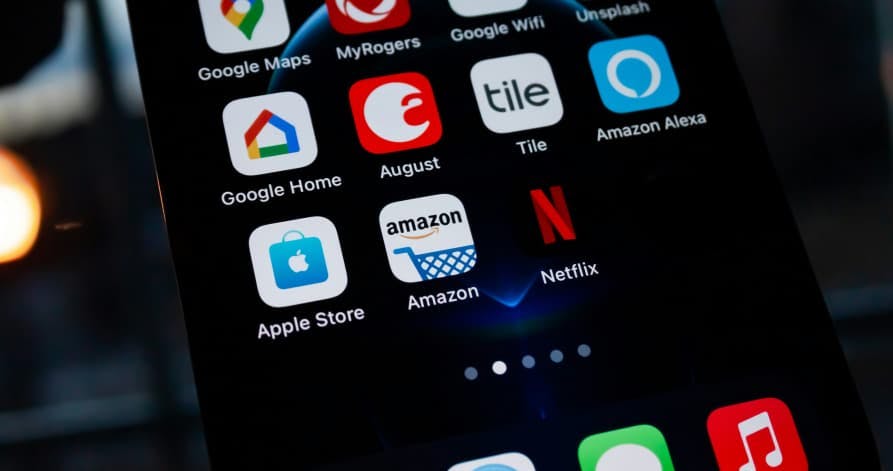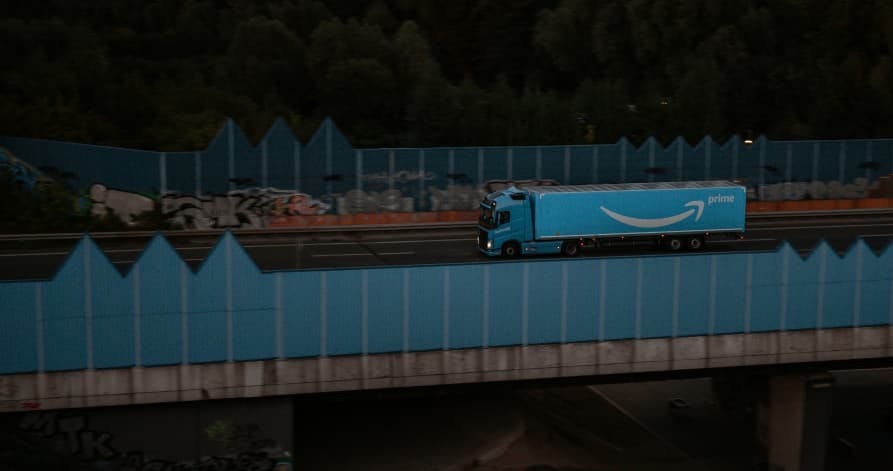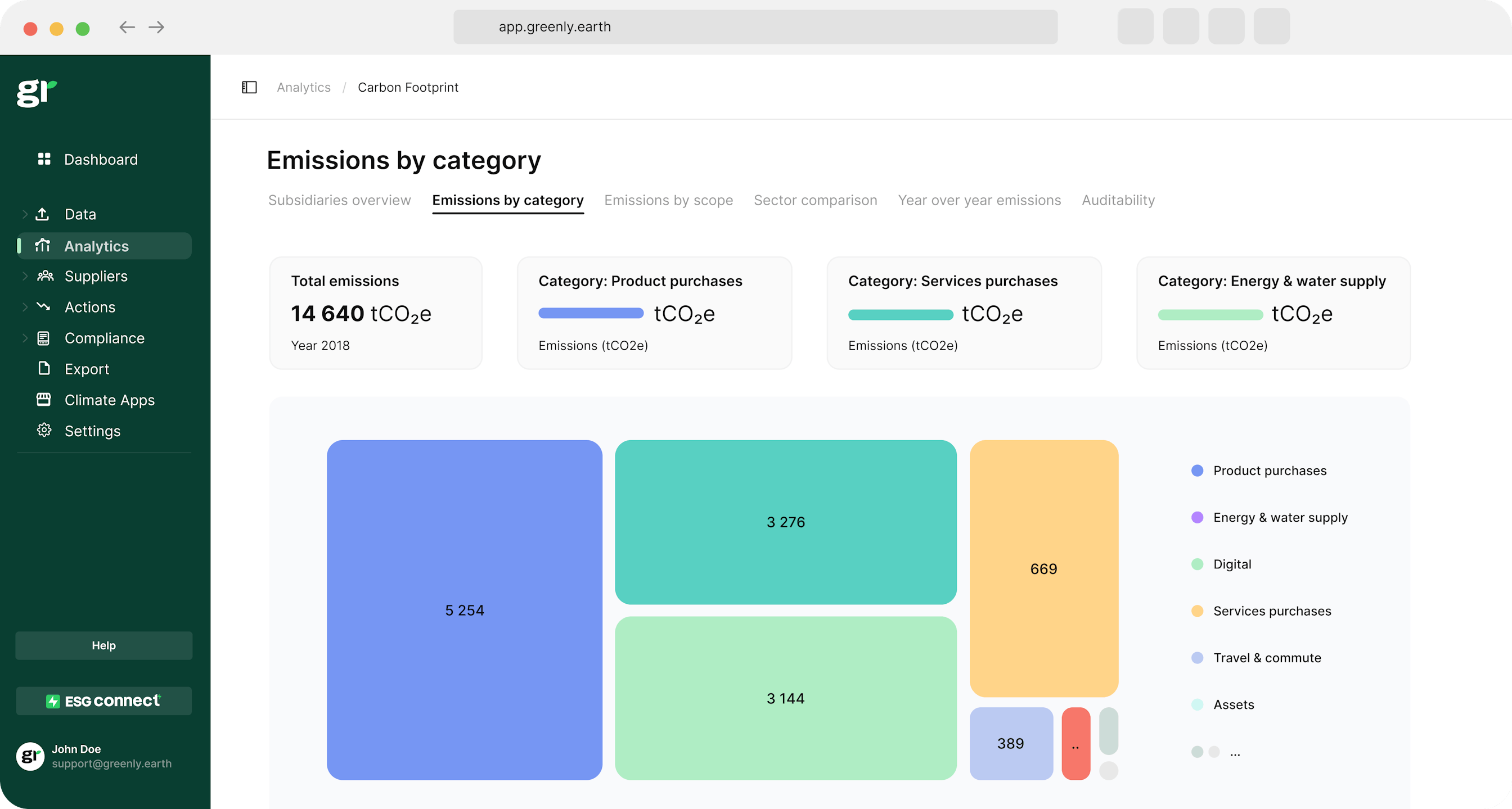In this article, we’ll discuss what Amazon is, why it’s bad for the environment, and a potential Amazon alternative for shoppers looking to become more sustainable.
ESG / CSR
2024-09-09T00:00:00.000Z
2024-09-09T00:00:00.000Z
en-gb
In 2024, online shopping is becoming more prevalent than ever before – with roughly 20% of all commerce purchases now taking place online.
One of the most popular sites worldwide to shop for online commerce is Amazon, as the site acts like a virtual grocery store, arts and crafts boutique, electronics hub – and just about anything else you could imagine needing for both your day-to-day life and special occasions.
However, Amazon has been subject to treating their workers poorly – demanding harsh working conditions to prioritise profit for the company over a safe work environment in addition to a growing carbon footprint.
In this article, we’ll discuss what Amazon is, why it’s bad for the environment, and a potential Amazon alternative for shoppers looking to become more sustainable.
What is Amazon?
Amazon is an online retail store, accessible in over 100 countries around the world, which allows people to purchase a wide variety of goods and services from various brands at a virtual one-stop-shop.
Some of the things people may choose to purchase on Amazon include but are not limited to:
💡Amazon was founded by Jeff Bezos back in 1994, originally started as an online bookstore before evolving to be the major online e-commerce shop that it is today.
“Amazon is one of the largest global retailers, as the company officially became the 5th U.S. company to achieve $2 trillion in stock market value. The company continues to grow, as Amazon expects to surpass $13 billion in exports before the end of 2024.”
In addition to a wide variety of goods and services, Amazon also offers other services such as:
- Amazon Web Services (AWS) – Amazon offers an online service for storage and networking, allowing Amazon to stay relevant in other areas – as it holds a staggering 32% share for the cloud market.
- Prime Membership & Streaming – Amazon Prime subscriptions can allow users to utilise free next-day shipping and special discounts. Also, Amazon Prime offers a selection of their own exclusive movies and T.V. shows, Amazon Prime users have access to additional media, music, books, and more in addition to exclusive shopping deals.
- In Person Stores – With Amazon’s first physical store opening back in 2015, Amazon opened a variety of in person stores to allow people to shop for groceries and convenience items whilst on the go. Examples include Amazon Go, Amazon Fresh, and their partnership with Whole Foods.
- Original Smart Devices – If you’ve ever heard of, “Hey Alexa” instead of “Hey Siri” used by Apple devices such as the iPhone, you’ve been made aware of Amazon’s own line of technology products such as Kindle e-readers and their own smart TVs referred to as the Amazon Fire stick.
👉 Essentially, Amazon acts as an “everything store” where users can shop for virtually anything they need and have it delivered straight to their door or available for in person pick up.

Why is Amazon bad for the environment?
Amazon is bad for the environment as they subject their employees to harsh working conditions, make use of a massive network for fast deliveries which create excess carbon dioxide emissions, and are even subject to plastic pollution.
“Between 2020 and 2021, Amazon’s carbon emissions grew by 18 percent – presumably as a result of more people shopping online during the Covid-19 pandemic.”
💡 As a result of the decline of in person stores, as U.S. expects only around 150 open malls left in the country by 2032 with online shopping steadily increasing post pandemic – Amazon will
Let’s break down some of the reasons why amazon is bad for the environment:
- Plastic Pollution – According to Oceana, a nonprofit ocean conservation organisation based in Washington D.C., Amazon generated nearly 600 pounds of plastic waste in 2020 alone. In addition to this, over 23 million pounds of that same plastic waste ended up in the ocean. This means that Amazon not only harms the environment via direct GHG emissions created by plastic in landfills, but by harming marine life and our ecosystems – both of which play a role in keeping climate change under control.
- Excess Carbon Emissions for One-Day Deliveries – In order to remain one of the top global online retailers, Amazon has acquired an extensive logistics network – such as their own warehouses, delivery trucks, and even air cargo services to ensure Amazon Prime users get their deliveries on time. However, the downside of this is that Amazon creates a massive carbon footprint in terms of transportation emissions – with one day deliveries having shown to increase emissions and even warm the planet faster.
- Lack of Ethical Sourcing – Amazon, as they offer goods from various and oftentimes off-brand retailers, doesn’t always provide information on the sustainable efforts behind the brands they use for wholesales. This means that many items on Amazon could be made without LCA, ethical sourcing, fair labor practices, or sustainability in mind.
- Little to No Renewable Energy Usage – Despite the fact that Amazon pledged to work towards net-zero emissions by 2040, the company has made little progress in utilising renewable energy sources – as the majority of their operations still depend on fossil fuels. As online shopping grows and Amazon’s efforts to transition to clean energy remain slow, the environmental impact will continue to grow out of hand. In addition to this, the continued increase in shipping emissions (which accounts for 3% of worldwide emissions) can also exacerbate air pollution, and in turn put people with asthma or other respiratory diseases at greater risk.
- Deforestation – With 110 warehouses in the United States and another 185 around the world, Amazon has set up hundreds of warehouses to allow for a more extensive and efficient shipping network to keep their customers satisfied. However, all of these warehouses often require trees to be cut down to create new room for open land – which contributes to deforestation and climate change.
- E-Waste – Amazon often allows their customers to return their products, but oftentimes this can include defective technology – creating e-waste as many of these products will be thrown away instead of being resold. In fact, between 2014 and 2020 – GHG emissions from e-waste increased by a whopping 53%.
👉 Amazon has built an extensive network to ensure efficiency and customer satisfaction, but in turn – it means the company remains subject to a large carbon footprint.

Why are Amazon workers treated poorly?
Amazon workers are treated poorly because the company often subjects them to harmful or unsafe working conditions for extended periods of time to help the company make a profit.
💡 Amazon workers have also expressed that they have received low-pay in exchange for their labor efforts, which resulted in the “Make Amazon Pay” strike.
““I stand with the MN FC workers and all FC workers across the country who have to work in inhumane conditions. Without the hard work of you all, Amazon’s success would be severely impacted and I want you all to know that you are supported and your voice is heard. We stand with you and will work hard to continue to make the case for equitable and suitable working conditions.” – Faisal Abdullahi, Senior Program Manager and IT Professional at Amazon.”
In fact, Amazon was condemned for its poor labor efforts by the U.S. Department of Labor, with the infamous branch of the U.S. government delineating how several Amazon workers were required to lift heavy packages more often than they should have, move their bodies in unnatural ways to lift items, and were tasked with long-hours.
👉 This put Amazon employees at greater risk of injury, and as a result – the Occupational Safety & Health Administration (OSHA) proposed a $46,875 fine on Amazon.
Are there other online alternatives to Amazon?
There are a few alternatives to Amazon, such as Etsy, Target, and Best Buy – though shoppers will likely have to use a combination of a few of these alternatives to suffice for the all-one-store Amazon offers.
Here are some more sustainable shopping solutions as an Amazon alternative:
- Etsy – Also an online store, Etsy is an online marketplace for independent sellers to list homemade or vintage goods online. Etsy, unlike Amazon, can help to promote small businesses while also offsetting 100% of their carbon emissions from shipping. However, Etsy is a more limited store than Amazon – as it’s best for homemade crafts.
- Target – A similar concept to Amazon, Target offers virtually everything a shopper could be looking for – from video game consoles, skincare products, makeup, clothing, groceries, to home goods. Many Target stores offer inhouse brand named items under labels such as Market Pantry. This allows shoppers to be able to look up how sustainable their products are with more ease than Amazon.
- Best Buy – One of the most well known electronics stores in the U.S., Best Buy can serve as a viable alternative for those who predominantly use Amazon to purchase electronic devices. Often carrying name brand electronics such as Canon or Sony, this will allow users to look up the climate pledges for each individual company.
- Costco – Buying in bulk can help save small trips to the grocery store, and Costco helps customers to accomplish this by offering club members access to a warehouse store to buy groceries in bulk. Oftentimes, people purchase things on Amazon in bulk – but a Costco membership can help reduce the need to do this and avoid increased transportation emissions created by Amazon.
- Walmart – Essentially a lower tier version of Target or miniature Costco, Walmart offers home supplies, groceries, clothing and more in their store.
In addition to these well known stores, there are also several sustainable-based online retailers that could help users to avoid using Amazon such as:
- Thrive Market – An online grocery store that ships its products in 100% sustainable packaging, Thrive Market members can benefit from bulk grocery shopping in a similar fashion to Amazon.
- EarthHero – An eco-friendly version of Amazon specifically for home, kitchen, bathroom, laundry and other cleaning supplies – EarthHero offers plastic free shipping and the opportunity to shop popular sustainable brands.
- The Detox Market – Specifically tailored to offer sustainable cosmetic and skincare products, The Detox Market offers a place for beauty lovers to shop eco-friendly products without the potential carbon footprint of other e-commerce sites like Amazon.
👉 While all of these alternatives can help users to avoid contributing to Amazon’s carbon emissions, Amazon should still make an effort to reduce its environmental impact – seeing as the global retail store is bound to continue growing the further we venture into the digital age.
| Alternative |
Pros |
Cons |
| Thrive Market |
- Focuses on organic and non-GMO products.
- Membership supports sustainability initiatives.
- Offers eco-friendly packaging and carbon-neutral shipping.
|
- Requires a paid membership to access savings.
- Limited product range compared to larger retailers.
- Shipping times can be slower than Amazon.
|
| Target |
- Offers a wide range of products, including sustainable options.
- Has eco-friendly product lines and a commitment to reducing plastic.
- Provides drive-up and in-store pickup services.
|
- Less variety in niche or specialty products compared to Amazon.
- Not all products are sustainable or ethically sourced.
- Availability of items can vary by location.
|
| Walmart |
- Extensive product range at competitive prices.
- Growing focus on sustainability and reducing emissions.
- Offers free pickup and delivery options.
|
- Mixed sustainability practices; many products are not eco-friendly.
- Often criticised for labor practices and impact on small businesses.
- Large carbon footprint due to extensive logistics network.
|
| Costco |
- Bulk purchasing reduces packaging waste and costs.
- Offers organic and sustainable product lines.
- Employee-friendly company with fair wages.
|
- Requires a paid membership for shopping access.
- Limited online selection compared to other major retailers.
- Bulk sizes not suitable for all households, leading to potential waste.
|
| Best Buy |
- Focus on electronics with sustainable options like Energy Star products.
- Recycling program for old electronics.
- Offers price matching and flexible pickup options.
|
- Primarily focused on electronics, with a limited range of other products.
- Some products have shorter lifespans contributing to e-waste.
- Not all products are sustainably sourced or manufactured.
|
| Etsy |
- Supports small businesses and independent creators.
- Offers many handmade, vintage, and eco-friendly products.
- Offsets carbon emissions from shipping.
|
- Prices can be higher due to the handmade nature of products.
- Shipping times can vary significantly, often slower than major retailers.
- Quality and consistency of products can vary between sellers.
|

How can Amazon reduce their environmental impact?
Even with all of the options out there, sometimes there will be one product offered on Amazon that can’t be found anywhere else – meaning that regardless of the sustainable alternatives, Amazon should make an effort to reduce their environmental impact.
Some of the ways that Amazon and customers alike could help to cut back on carbon emissions on behalf of Amazon include:
- Encourage Group Shipments – Oftentimes, users will opt to receive their packages in various shipments to allow their items to arrive faster – but Amazon should restrict this option as the carbon footprint created for these individual shipments has gotten out of control. Instead, Amazon should incentivise users to group their shipments together in exchange for a discount or credit – something the company has already previously employed.
- Employ the Use of Renewable Energy – Amazon can easily utilise renewable energy to their benefit, such as by switching to green delivery trucks (EVs) to help reduce the GHG emissions from daily deliveries.
- Reduce Globalised Nature of Amazon – It’s true that our global economy will continued to be affected by climate change, meaning that if Amazon were to restrict certain items from global shipping – it could help to reduce transportation emissions.
- Shop in Bulk in Stores – A trip to a warehouse store like Costco to stalk up on granola bars and other household items in bulk could help customers to avoid ordering bulk online via Amazon and help the company cut back on transportation emissions.
Overall, there are indeed suitable alternatives to Amazon – but the company should still make an honest effort to reduce their own environmental impact and set an example for the growing e-commerce industry.
What About Greenly?
If reading this article on alternatives to using Amazon has made you interested in reducing your carbon emissions to further fight against climate change – Greenly can help you!
It can be overwhelming to figure out how to go green, but don’t worry – Greenly is here to help. Click here to schedule a demo to see how Greenly can help you find ways to ensure your company is complying with all current and future environmental regulations.
Greenly can help you make an environmental change for the better, starting with a carbon footprint assessment to know how much carbon emissions your company produces.
Click here to learn more about Greenly and how we can help you reduce your carbon footprint.








